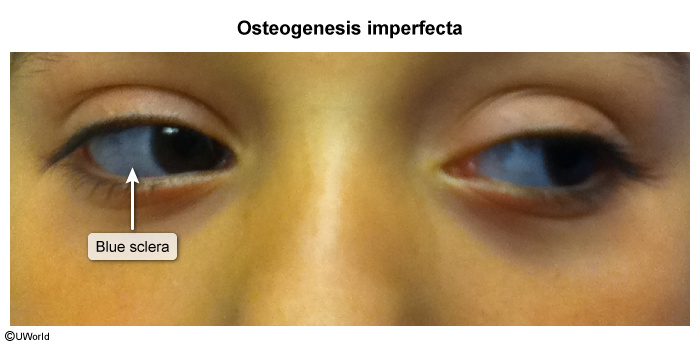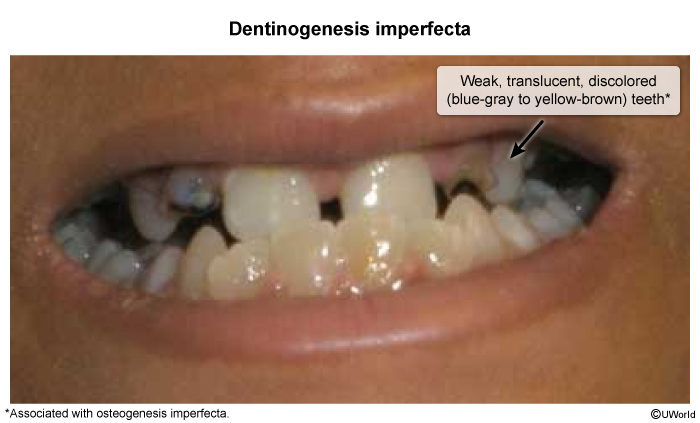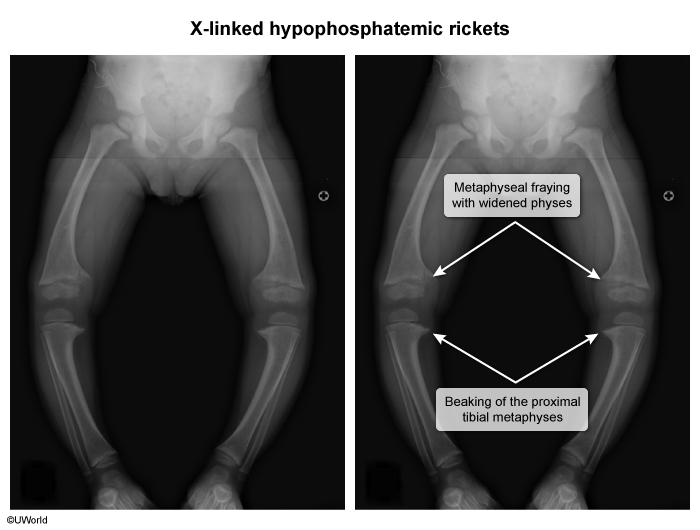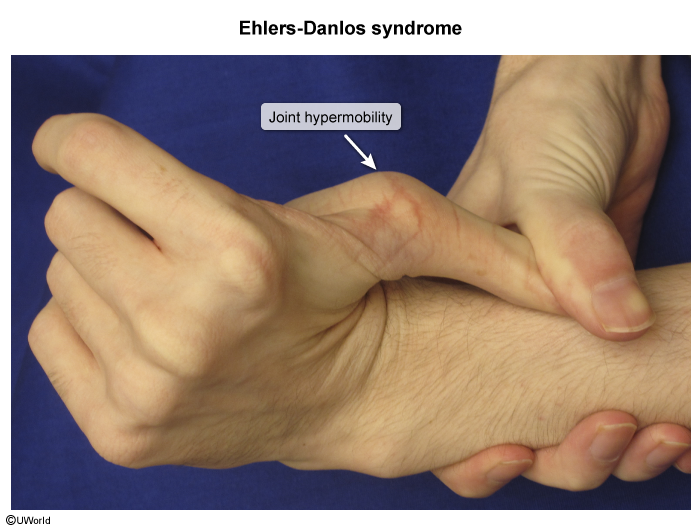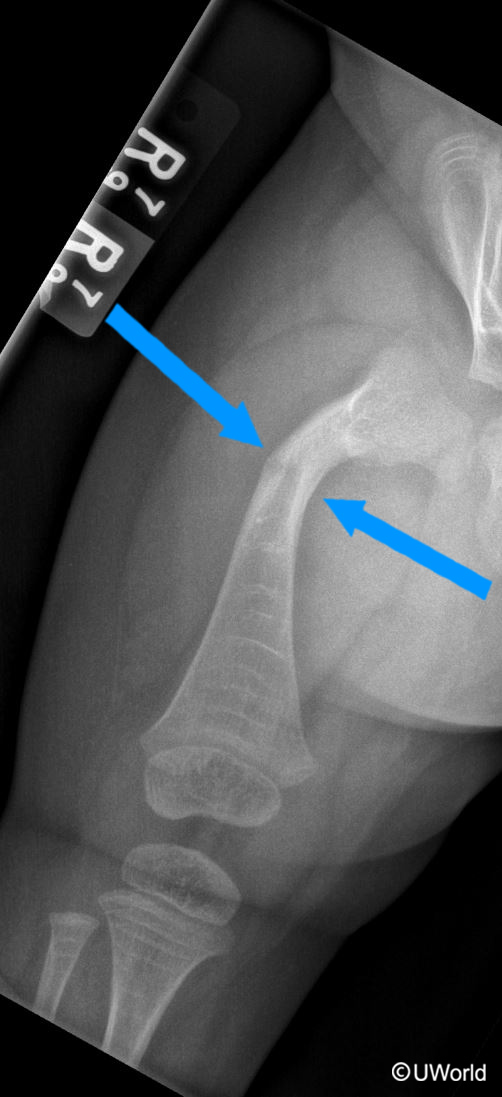Osteogenesis Imperfecta
Article Sections
Introduction
Osteogenesis imperfecta (OI) is an autosomal dominant genetic disorder characterized by increased bone fragility and susceptibility to fracture due to a structural defect in type I collagen.
Pathophysiology
Collagen is a structural protein that composes many types of connective tissue. Type I collagen is an important structural component of bone, tendons, ligaments, skin, sclera, and teeth. It is the predominant collagen in osteoid (the organic component of bone matrix), allowing bones to be somewhat flexible while still maintaining strength.
The vast majority of OI cases involve mutations in COL1A1 or COL1A2, which code for the alpha chains in type I collagen. Mutations in these genes cause impaired type I collagen synthesis by osteoblasts, resulting in thin, irregular trabeculae and reduced bone mass. Consequently, the bones are brittle and prone to fractures and deformities. OI is typically inherited in an
Continue Learning with UWorld
Get the full Osteogenesis Imperfecta article plus rich visuals, real-world cases, and in-depth insights from medical experts, all available through the UWorld Medical Library.
Images
